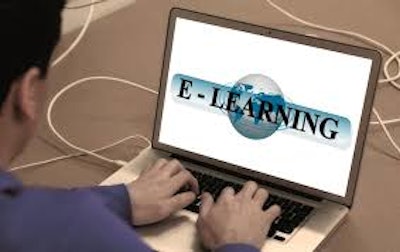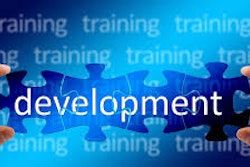How effective is e-learning in the development of your team? Many organizations praise e-learning as the ultimate solution to development because it’s sustainable and extremely cost effective. A lot of money gets invested in developing e-learning for clients in industries like entertainment, aerospace, energy, home appliance and pharmaceutical, with all having experienced similar results.
When built and used correctly, e-learning can be a powerful tool for companies. However, companies tend to choose packages that don’t suit them, resulting in less-than-satisfactory results and limited impact on the organization. Often times, professionals look to utilize e-learning as a way of cutting training expenses for procurement teams. While unfortunate, it isn’t uncommon. Some skill sets need to be delivered in a classroom setting, and courses like negotiation and cost analysis require that the student try different approaches in a laboratory. That is not to say that gamification and artificial intelligence won’t be a long-term solution for interactive negotiation training, just not today.
Many companies also buy e-learning licenses for students, but when the annual licenses begin to expire, companies often seek licensure extensions so that employees who were busy during the year can cram the packages to meet personal and corporate training objectives. This leads to poor retention. It would be more worthwhile for companies to save their money until they develop a review process that assures employees are meeting program goals and a sequence and schedule of modules.
How effective is e-learning in the development of your team? Many organizations praise e-learning as the ultimate solution to development because it’s sustainable and extremely cost effective. A lot of money gets invested in developing e-learning for clients in industries like entertainment, aerospace, energy, home appliance and pharmaceutical, with all having experienced similar results.
When built and used correctly, e-learning can be a powerful tool for companies. However, companies tend to choose packages that don’t suit them, resulting in less-than-satisfactory results and limited impact on the organization. Often times, professionals look to utilize e-learning as a way of cutting training expenses for procurement teams. While unfortunate, it isn’t uncommon. Some skill sets need to be delivered in a classroom setting, and courses like negotiation and cost analysis require that the student try different approaches in a laboratory. That is not to say that gamification and artificial intelligence won’t be a long-term solution for interactive negotiation training, just not today.
Many companies also buy e-learning licenses for students, but when the annual licenses begin to expire, companies often seek licensure extensions so that employees who were busy during the year can cram the packages to meet personal and corporate training objectives. This leads to poor retention. It would be more worthwhile for companies to save their money until they develop a review process that assures employees are meeting program goals and a sequence and schedule of modules.
A Blended Approach
A good example of an e-learning approach that is proven to work is a blended learning and development program for high-potential employees. After creating a high-potential team, one chief procurement officer commissioned a custom e-learning program for all others across the company, with the goal of having the high-potential team serve as mentors to those engaged. At the end of the program, it was clear that though employees became aware of the new tools, many needed a refresher course afterward. A mini-clinic program was then adopted to reinforce the e-learning process.
Another example of e-learning done right is a global conglomerate manufacturing organization that created a process that could classify as “world class.” Its procurement and learning and development teams worked together to assess competency gaps that needed to be closed. Upon review, the team then created a custom e-learning package aimed at tactical and fundamental tools that were necessary for students to start the class.
Following the e-learning module, participants were invited to attend a three-day strategic thinking classroom training program. If participants failed to complete the e-learning program prior to the class, they were denied entry to the class. In the program, students were assigned a cost and value improvement project and given six months to complete the project. Upon completion, employees received company credit for the development course to meet their development objectives.
The company embraced the new tools and processes and embedded the learning, resulting in a return on investment of $40 for every $1 spent in the training program.
Not All E-Learning is Equal
Not all e-learning packages are the same, though. Some e-learning packages consist of an eight-hour PowerPoint course with no narration. Even the best student cannot take a large dose of annotated PowerPoint slides. These poorly constructed modules increase the risk of students leaving and never returning to complete them.
Other providers design the packages to be generic and fail to relate to students. For example, one technology company purchased an e-learning program that failed to work with the company’s firewalls, creating an environment where limited students were able to access the program, and others were left to fend for themselves. The e-learning experience can be lonely, and students can leave feeling isolated.
Choosing the Right Platform
While considering an e-learning solution, know that it needs to be interactive, flexible, personalized and customized. When selecting e-learning for your company, it is critical that the supplier is agile and flexible in enabling customization of the learning to meet your learning objectives.
A reporting process that follows students’ progression through the e-learning program also needs to be included in the package. It’s essential that the modules are being taken, progress is being made and the progress is following the right sequence.
Most importantly, the entire organization must embrace the new processes and concepts. Nothing is more demotivating than learning new skills and returning to an environment that inhibits the use of new knowledge.
There is no substitute for a blended learning program to develop your team. If you are using e-learning correctly, it can be a powerful tool to move your team strategically. If it is just a way to check off the training box and save money on travel, you are wasting everyone’s time and the company’s money.




![Pros To Know 2026 [color]](https://img.sdcexec.com/mindful/acbm/workspaces/default/uploads/2025/08/prostoknow-2026-color.mduFvhpgMk.png?auto=format%2Ccompress&bg=fff&fill-color=fff&fit=fill&h=100&q=70&w=100)







![Pros To Know 2026 [color]](https://img.sdcexec.com/mindful/acbm/workspaces/default/uploads/2025/08/prostoknow-2026-color.mduFvhpgMk.png?ar=16%3A9&auto=format%2Ccompress&bg=fff&fill-color=fff&fit=fill&h=135&q=70&w=240)








